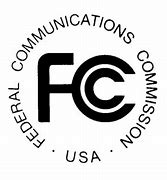The Federal Communications Commission (FCC) recently released its 2024 Broadband Deployment Report, which provides a comprehensive analysis of broadband availability in the United States. Mandated by Section 706 of the Telecommunications Act of 1996, this annual report assesses whether advanced telecommunications capability is being deployed to all Americans reasonably and timely. The 2024 report offers insights into the progress, the remaining challenges, and the FCC’s strategic goals to address these issues.
Redefining Broadband Standards
One of the notable updates in the 2024 report is the FCC’s decision to raise the benchmark for high-speed fixed broadband to download speeds of 100 megabits per second (Mbps) and upload speeds of 20 Mbps. This is a significant increase from the previous standard of 25/3 Mbps set in 2015. The new benchmark reflects the evolving demands of consumers and the necessity for faster internet speeds to support activities such as remote work, online education, and streaming services.
Current State of Broadband Deployment
The report indicates that, as of December 2022, approximately 24 million Americans, or 7% of the population, lack access to broadband services meeting the 100/20 Mbps standard. The disparity is more pronounced in rural and Tribal areas, where 17% and 20% of residents do not have access to these speeds. In contrast, only 1% of urban residents lack access to high-speed broadband, highlighting the persistent digital divide between urban and non-urban areas.
Adoption of New Data Collection Methods
For the first time, the FCC utilized data from its Broadband Data Collection (BDC) program to assess broadband availability. This program replaces the FCC Form 477 data collection method, offering more precise, location-specific information on broadband service availability. The BDC data is enhanced through input from consumers, state, local, and Tribal governments, and other stakeholders, allowing for challenges and crowdsourced data to refine the accuracy of service availability information.
Evaluation of Universal Service Goals
The FCC’s 2024 report adopts several universal service goals to guide its assessment:
-
Universal Deployment: Ensuring that all Americans have access to broadband services.
-
Affordability: Making broadband services financially accessible to all consumers.
-
Adoption: Encouraging widespread use of broadband services among the population.
-
Availability: Guaranteeing that broadband services are available in all regions.
-
Equitable Access: Providing fair and impartial access to broadband services across different demographics and regions.
These goals align with those established in the FCC’s Future of Universal Service Fund Report and reflect a comprehensive approach to addressing the multifaceted aspects of broadband deployment.
Challenges in Rural and Tribal Areas
The report emphasizes that broadband deployment in rural and Tribal areas continues to lag behind urban regions. Factors contributing to this disparity include the high costs associated with infrastructure development in sparsely populated areas and the challenging terrains that complicate network installations. The FCC acknowledges these challenges and underscores the need for targeted efforts to bridge this digital divide.
Affordability and Adoption Barriers
Beyond infrastructure deployment, the report highlights affordability and digital literacy as significant barriers to broadband adoption. Despite the availability of broadband services, many Americans remain offline due to high costs or a lack of digital skills. Programs like the Affordable Connectivity Program (ACP) have aimed to address these issues by providing subsidies to low-income households. However, challenges such as broad eligibility criteria have led to sustainability concerns, with the program running out of funding by mid-2024.
Future Initiatives and Recommendations
In response to the findings, the FCC plans to implement several initiatives:
-
Enhancing Affordability Programs: Reforming subsidy programs to ensure they effectively target low-income households and are financially sustainable.
-
Promoting Digital Literacy: Investing in educational programs to equip individuals with the necessary skills to utilize broadband services effectively.
-
Encouraging Public-Private Partnerships: Collaborating with private sector entities to leverage resources and expertise in expanding broadband infrastructure.
-
Updating Broadband Mapping: Continuing to refine data collection methods to accurately identify areas lacking adequate broadband access, ensuring that resources are directed where they are most needed.
The FCC’s 2024 Broadband Deployment Report provides a detailed overview of the nation’s progress in expanding broadband access while highlighting the persist challenges, particularly in rural and Tribal areas. By redefining broadband standards, adopting improved data collection methods, and setting comprehensive service goals, the FCC demonstrates its commitment to closing the digital divide. Continued efforts focusing on affordability, adoption, and equitable access are essential to ensure that all Americans can benefit from high-speed internet opportunities.



